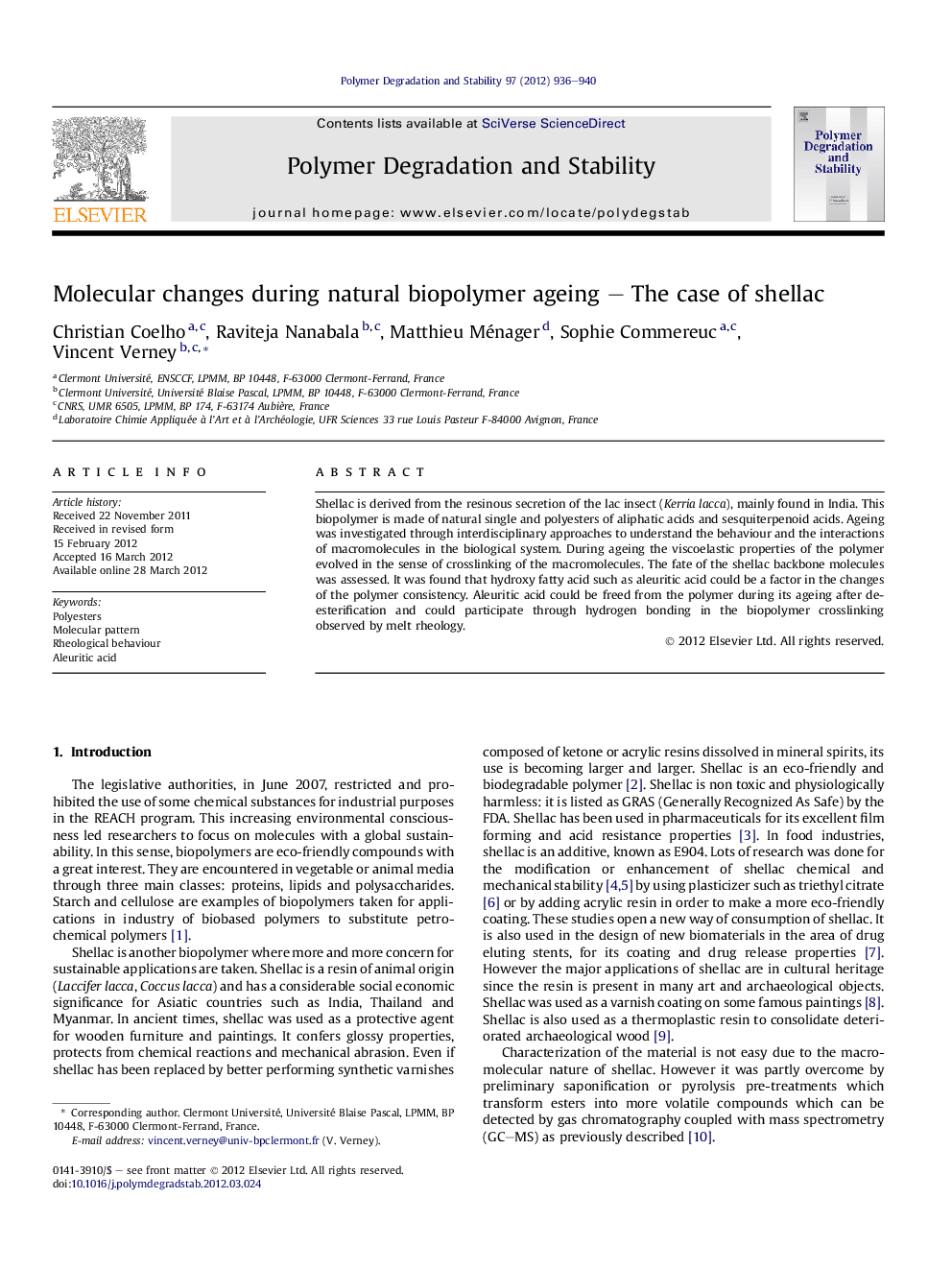| Article ID | Journal | Published Year | Pages | File Type |
|---|---|---|---|---|
| 5202802 | Polymer Degradation and Stability | 2012 | 5 Pages |
Abstract
Shellac is derived from the resinous secretion of the lac insect (Kerria lacca), mainly found in India. This biopolymer is made of natural single and polyesters of aliphatic acids and sesquiterpenoid acids. Ageing was investigated through interdisciplinary approaches to understand the behaviour and the interactions of macromolecules in the biological system. During ageing the viscoelastic properties of the polymer evolved in the sense of crosslinking of the macromolecules. The fate of the shellac backbone molecules was assessed. It was found that hydroxy fatty acid such as aleuritic acid could be a factor in the changes of the polymer consistency. Aleuritic acid could be freed from the polymer during its ageing after de-esterification and could participate through hydrogen bonding in the biopolymer crosslinking observed by melt rheology.
Related Topics
Physical Sciences and Engineering
Chemistry
Organic Chemistry
Authors
Christian Coelho, Raviteja Nanabala, Matthieu Ménager, Sophie Commereuc, Vincent Verney,
